Roland’s latest handheld boutique synth is a departure. Instead of a synth or drum machine, it was inspired by the SP-404. Here’s the skinny on its onboard sampling, effect, and sequencer features, direct from the source.
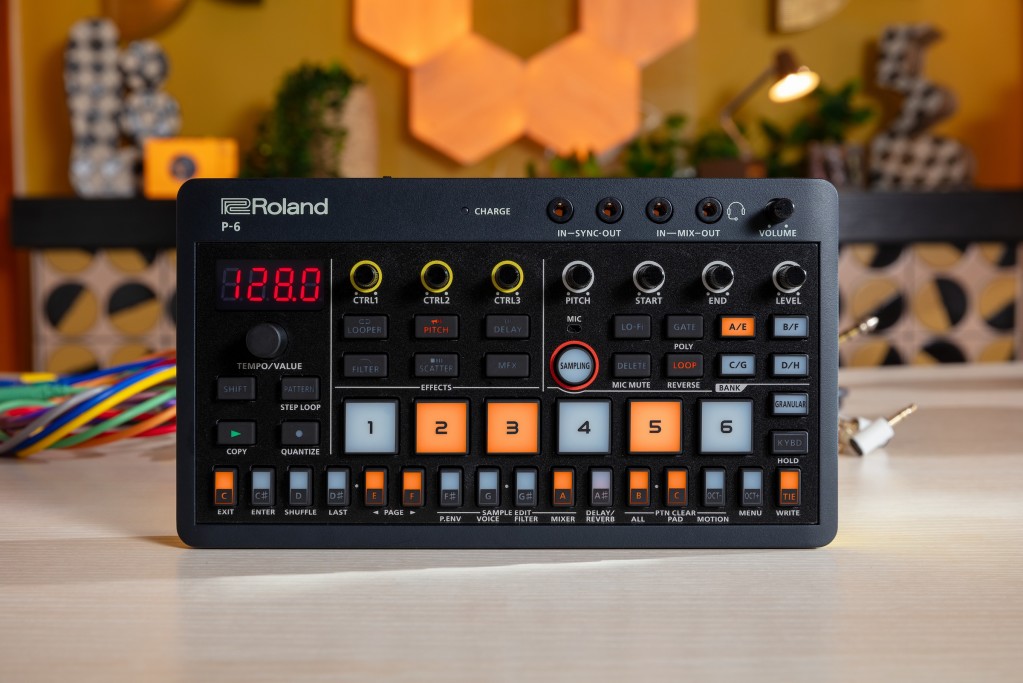
It’s clear that Roland has transitioned from candy bar-sized, 303-ish Boutique models (SH-01A, TB-03, TR-09, etc.) to the AIRA Compact handheld format with USB-C power. They’ve had a hit with that format, too, in the unexpected popularity of the Roland S-1. I liked the Boutique range, but the Compact fit nicely into carry-on luggage. (Roland even sells an optional case – it’s quite nice; I’ve got one lying around.)
The S-1 was fun, but I expect the P-6 may be the big hit of this range. It’s a pocket-sized sampler in the classic mold. We’ve seen frankly too little of that; sometimes, you want to grab a recording on the fly and mess with it musically, Casio SK-1 style.
The P-6 is not a baby SP-404 in the way the S-1 came from the SH-01A and the T-8 from the TR-8S / TR-09 / TR-08 / TR-06 / TR-03. But it does have 404-style effects, some surprisingly powerful sequencing capabilities, and a powerful, fun sampling engine. The basic specs:
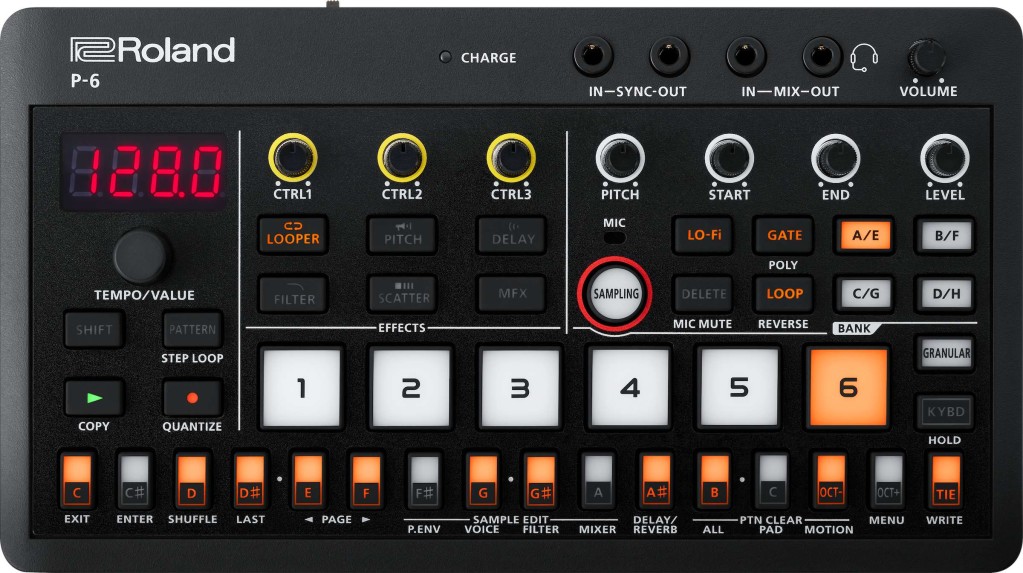
- Built in mic, quick sampling from the mic / line in (or a mobile phone – direct via USB-C)
- Granular sampling engine
- Performance FX (borrowed loosely from the 404)
- Sample sequencing, pad triggering (including keyboard mode and hold)
- 64-step patterns, probability, sub steps, microtiming, off-grid sequencing, motion recording
- Resampling
- Rechargeable lithium-ion battery
- Sync input, output
- Mix in jack for audio signals (routed to mix out)
- USB-C for power, charging, data transfer
- MIDI in, out jacks (minijack – independent from the sync jacks!)

(Note that the battery technology means you should not put this in checked luggage.)
I don’t have a test unit yet, but I do have some details on what’s happening under the hood after consulting with Roland.
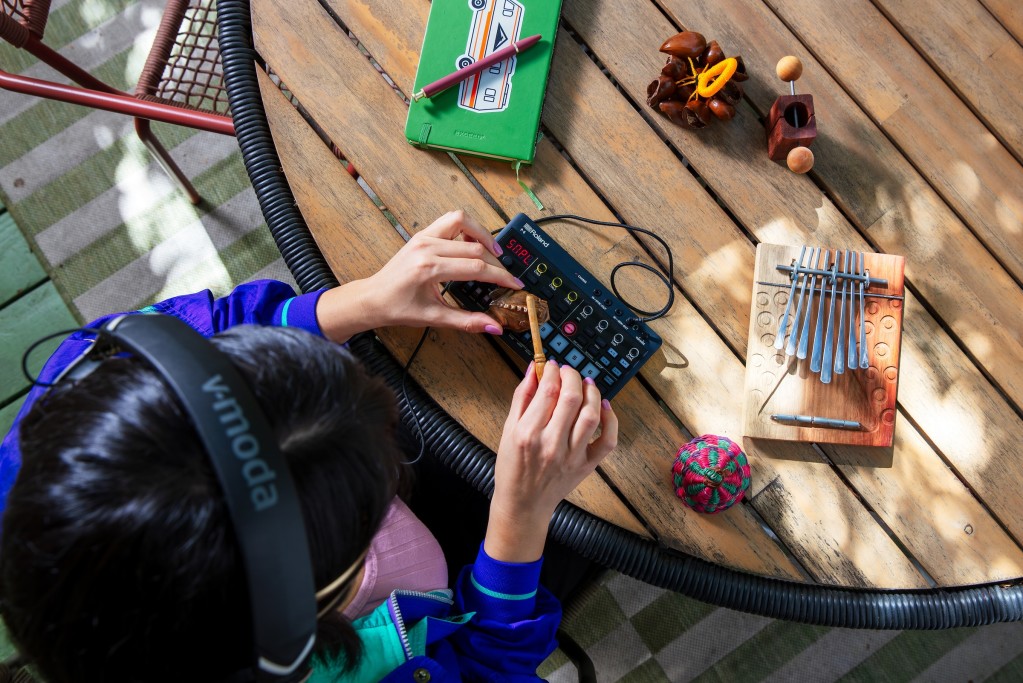
Think quick samples, old-school style. There’s not a lot of sample memory on this unit – just 5.9 seconds per sample and a total memory of 285 seconds at 44.1k mono. (If you reduce to 11.025 kHz mono, you can extend that to 23.7 seconds per sample or about 19 minutes total.) That’s still fun for experimentation and old-school sampling; it’s a reasonable creative limitation for a handheld device.
There’s also step sampling. Choose a number of steps, press the pad you want to sample, and start recording. In other words, you can make quick chopped-up samples by recording one by one, then playing back with all the pads/sequencing. (That even supports polyphonic sample playback.)
Go hands-on with sample parameter edits. Edit settings for the pitch envelope, filter, and mixer, plus loop direction, lo-fi, and so on.
Automatic chopping. Slice a sample into segments based on length – this does not use transient detection, but just fixed length (though that can also be fun).
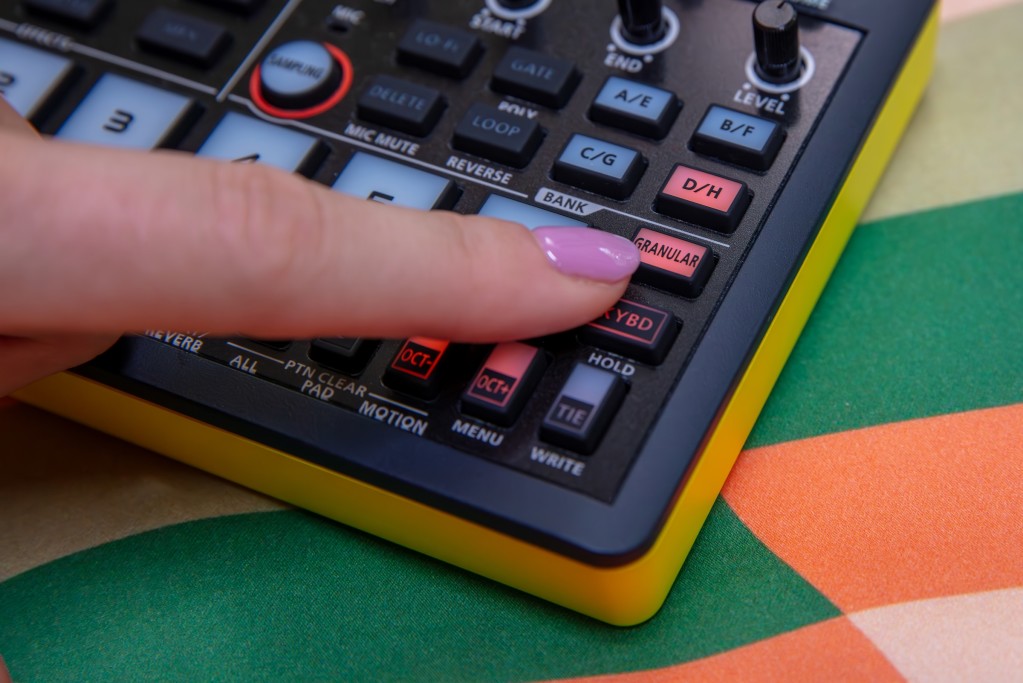
The granular engine is all new. This was developed just for the P-6 – we haven’t heard it before from Roland. You get controls for head position, head speed, grain size, and grain shape – so a true, controllable asynchronous granular sample engine. It also works with pitch settings onboard.
You get some favorite effects from the SP-404MKII. This is as much a 404 effects box as it is a sampler. You get the DJFX looper, chromatic pitch shift, sync delay, filter and drive, scatter, isolator, resonator, stopper, super filter, vinyl sim, cassette sim, lo-fi, reverb, chorus, flanger, phaser, tremolo/pan, ring mod, crusher, and compressor, all with three controls each (and up to six controls with the SHIFT key).
You can use this as a multi-effects units. There’s live monitoring of the audio input or microphone through effects, and you can route any samples through the effects engine.
You can also momentarily trigger the effects – or route pads so they bypass effects as a per-pad setting.
Note that there’s no motion recording support for the MFX effects, though other effects parameters are supported – those mapped to Pitch / Start / End / Level knobs or CTRL 1 / 2 / 3.
[Corrected/clarified: the original draft of the story missed the live monitoring option and was unclear that the effects routing is a per-pad MFX routing setting. Added clarification on effects motion control.]
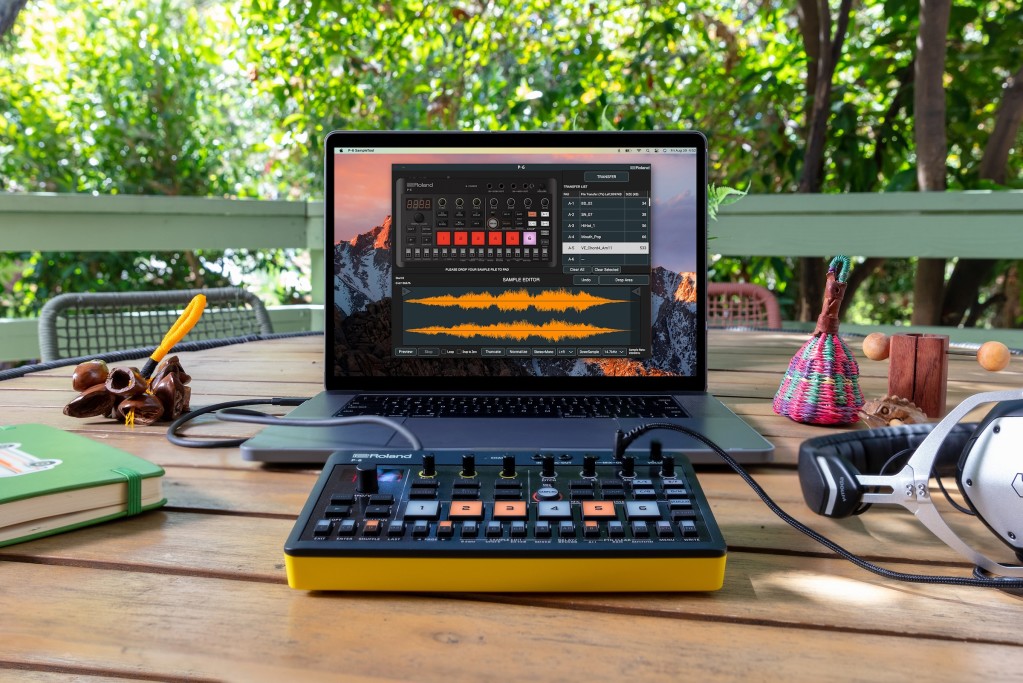
You can transfer samples and patterns to and from a computer. This one is the must for me. The P-6 mounts as a USB Mass Storage Device, and there are backup and restore modes for loading samples and patterns. You can just drag and drop samples to pads in each bank.
The P-6 Sample Tool for macOS and Windows also lets you edit and import samples. That gives you some additional options for prepping files before you upload: downsampling (for lo-fi sound – and extended sample times), truncating, stereo-to-mono conversion, snap to zero, and more. Of course, you could use your favorite wave editor for the same. So, sure, the app is crude – we haven’t seen a lot of particularly advanced software editors from Roland lately – but no matter; I’m happy for quick-and-dirty USB transfer!
You can import up to 10 MB at a time; you have to repeat the process for more.
The patterns are stored in a PRM format, so those are just for backup/transfer onto other P-6 models; they’re unfortunately not MIDI patterns. (No word yet on whether there’s a way to import/export those outside the devices.)
You get tons of sequencing options. Sequence pads, record and playback sequences, working both with the sample pads and granular pad, working in real-time or with step entry. There’s also motion recording of the knobs, both in real-time and with steps (p-locks). (This is limited to the Pitch, Start, End, and Level knobs, plus ctrl 1 + 2 + 3.) There’s even copy-paste and other details, which I wouldn’t normally expect on a small, budget entry like this.
Interestingly, Roland does not refer to TR-REC anywhere in the documentation, so those playing the Roland drinking game at home, do not touch your shot glass.
This all looks great. It’s by far the most sophisticated of any of the AIRA Compact range – this time they’ve really crammed in features. It honestly feels like what the KORG volca sample should have been. It’s about time we got some lo-fi pocket samplers. (hey, even more – the more the merrier!) Note: volca sample 2 did finally add USB, and you get more hands-on parameter control for the samples plus the analog isolator. But effects are limited to just a reverb, and Roland has those nice big pads and extra sampling features, so overall the P-6 has an edge.
Count me in. Hope to test this one soon.
And I’m curious if that granular engine will appear anywhere else…
More specs:
User patterns: 64
Step sequencer: 64 steps
Maximum sampling: 48 samples
Maximum polyphony – Sample: 16 – Granular: 4
Videos
BoBeats rounds up all the mini-samplers around, though I think this is in a slightly different category – more in the ultra-portable territory, and closest to the volca sample, which people may have forgotten or tried to forget because it lacks USB for easy file transfer.
Detailed video review from loopop:
Ave has a spicy take, though I’d say – this is an obvious take. Yeah, small, easy, powerful enough, maybe you don’t need big gear.
Where to buy / more:
(Hey, is anyone else wondering why this isn’t called a P-4? Oh, well, Roland gonna Roland.)
If you buy something from a CDM link, we may earn a commission.
AIRA Compact P-6 Creative Sampler [Perfect Circuit]
Roland AIRA P-6 Creative Sampler [Guitar Center]
Roland P-6 Creative Sampler [Sweetwater]
Kids, do always make sure you get a creative sampler. I’ve used some derivative samplers, mundane samplers, and mediocre samplers and been disappointed by the results for some reason.